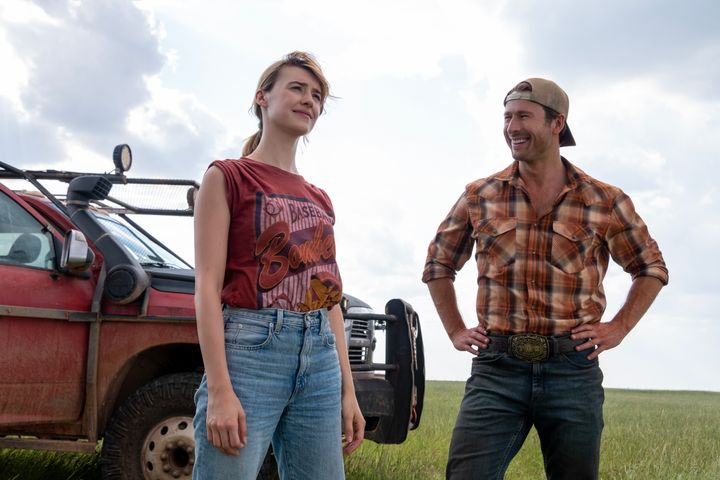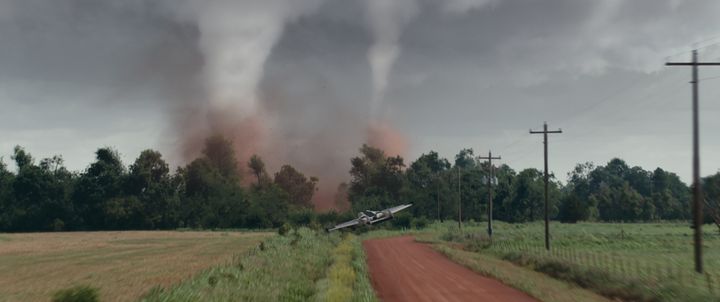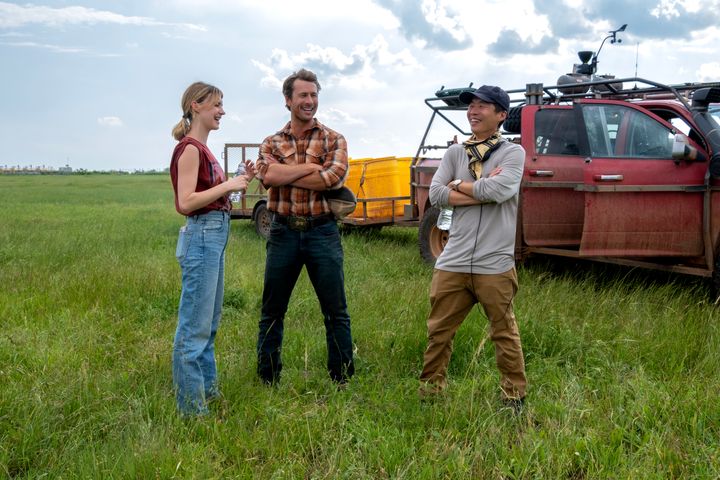
Did we need this? It’s a question I ask myself (sometimes out loud at my computer screen) every time there’s news of another movie with a number in its title.
Eighteen years after the original became endlessly rewatchable and quotable, did we need “The Devil Wears Prada 2”? A sequel. Groundbreaking.
Ditto “Freaky Friday 2,” now in production with the beloved duo of Jamie Lee Curtis and Lindsay Lohan returning. Or “Shrek 5” (yes, you read that number correctly). All of these projects — that likely nobody asked for — were announced in the last few weeks, continuing Hollywood’s unrelenting churn of sequels, prequels, reboots, revivals, remakes, spinoffs, etc.
This weekend brings another variation to theaters: “Twisters,” directed by Lee Isaac Chung (following his 2020 Oscar-winning film “Minari”) and starring several of today’s most promising stars or stars on the rise, including Daisy Edgar-Jones, Anthony Ramos and leading man of the moment Glen Powell. Loosely connected to 1996’s “Twister,” it’s somewhere between a sequel and a remake: starting with the concept of the original and including some Easter eggs from it, but requiring no substantive knowledge of the first film.
One undisputed strength of this new version: Its visual effects are quite impressive and immersive. The tornadoes really do look real, something the original couldn’t achieve because the technology wasn’t there 30 years ago. Similarly, the film’s storyline illustrates how storm-chasing has changed since “Twister.” There’s also a greater sense of urgency for the characters, as storms are now more frequent and more severe.
But beyond those updates, there’s not much justifying the film’s existence. The story and characters are pretty thinly drawn, and some of the dialogue is hilariously clunky.

On a surface level, “Twisters” is a perfectly fine way to spend 2 hours in an air-conditioned movie theater during a heat wave. Yet it also left me feeling as cynical as ever about the state of Hollywood, and what happens when art comes up against commerce.
When a movie is only loosely connected to existing material, it doesn’t need to be branded that way. It’s a cynical marketing ploy: capitalize on recognition and nostalgia for the original — when people could just rewatch the original if they wanted to. (See also: the recent “Mr. & Mrs. Smith” series starring Donald Glover and Maya Erskine, which takes the concept of the movie of the same name… and that’s it. So why call it the same name, when they have little in common, and if you wanted to watch something resembling the original, you’d just watch the original?)
It’s great to see a talented filmmaker like Chung get his flowers and graduate to something on a bigger scale. That can be a fun challenge, as he described in a recent New Yorker interview.
“There was the giant machinery of it all. I knew that would be a learning curve for me. With ‘Minari,’ I could just craft it and perfect it. With ‘Twisters,’ I knew it’d be a lot more expansive and I’d have less control. Honestly, I felt intimidated and afraid. But then that lit a fire within me to do it, because of that reason,” Chung said. “I felt like, if I didn’t do it, I would always regret it. That’s something I put into the movie — that feeling of going into something that you’re scared of.”
But too often, that challenge requires artistic compromise: making something less individual, less personal, and, as Chung said, with less creative control. It often means making the best movie you can — while working within the constraints of Hollywood’s giant machinery. It’s hard. I don’t begrudge individual filmmakers for having to make these compromises.

The compromises are especially apparent when acclaimed directors direct one of the endless installments of superhero franchises, which audiences are not exactly clamoring to see anymore, as they often feel like reheated leftovers dished up for mindless consumption.
Alongside these franchises, there’s also the logical endpoint of late-stage capitalism: product placement movies. (Sorry to Jerry Seinfeld, but no one asked for a Pop-Tart movie.) Greta Gerwig’s “Barbie,” which did manage to make something highly entertaining and original out of a product, could not quite square that with being essentially a two-hour advertisement for a toy, produced by two major corporations (Warner Bros. and Mattel). Even when the result is much more than reheated leftovers, it’s exceedingly difficult to reconcile art and commerce.
Taken together, these days, it’s hard not to feel disillusioned by Hollywood, where there seems to be smaller and smaller pockets of opportunity to make new and original work, especially in a big arena.
Ironically, my saying this isn’t original, either. Everything here can apply to many recent sequels, prequels, reboots, revivals, remakes or spinoffs. It all seems to be getting worse as Hollywood’s megacorporations merge into even bigger behemoths and prioritize consolidation and cost-cutting — all fueling more risk-averse choices.
It comes at the expense of the many filmmakers trying and failing to get their original ideas greenlighted. And it comes at the expense of audiences, too. We deserve better than major corporations turning art into commodities and repurposing them over and over again, sending them out on a conveyor belt of movie franchises that just keeps chugging along.
Disclaimer: The copyright of this article belongs to the original author. Reposting this article is solely for the purpose of information dissemination and does not constitute any investment advice. If there is any infringement, please contact us immediately. We will make corrections or deletions as necessary. Thank you.
